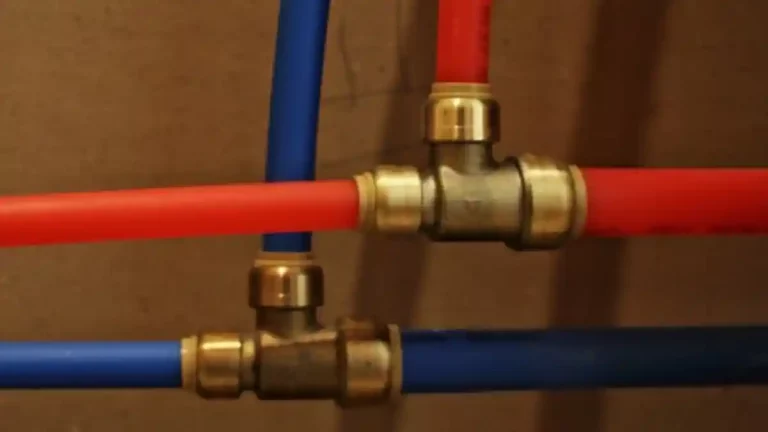Winter in the north is a season of cozy times around the fire, warm meals, and ice. Ice everywhere, including in your water pipes. Despite your best efforts, your pipes have frozen. So, how do you go about unfreezing pipes and preventing damage?
If you suspect that you have a frozen pipe, open your faucets to check for water flow. If the pipe has frozen, no water will come out. Be sure to check to see whether the pipe has burst. If the pipe is intact, proceed by applying heat to unfreeze the pipe, avoiding the use of open flames that can cause a fire hazard.
If you live in a colder part of the country, you are sure to face this problem sooner or later, so read on to find out what to do when it happens to you.
Why Frozen Pipes Cause Problems?
Unlike other substances, freezing water expands, putting pressure on metal or plastic water pipes. The pressure of expanding water can cause pipes to break.
When the water thaws and leaks out through the crack in the pipe, you may be faced with hundreds of gallons of water pouring out, causing tremendous amounts of damage to flooring, ceilings, wall panels, furniture, and your furnace.
Furthermore, water and humidity in your home are a recipe for mold, a health hazard.
The pipes that most frequently freeze are:
- Pipes exposed to severe cold, such as water sprinkler lines, outdoor hose bibs, and swimming pool supply lines.
- Water supply pipes in unheated interior spaces such as basements, attics, kitchen cabinets, or garages.
- Pipes running against exterior walls with little or no insulation.
Steps To Follow If You Have A Frozen Pipe
If you open a faucet and get only a trickle of water, you may have a frozen pipe. Other signs of frozen pipes are water pipes coated in frost or bulging outward with a plug of ice inside.
Be careful when unfreezing the pipes because the water will flow out and flood your home if a pipe has already burst.
If a pipe has broken or you are dealing with a severe problem, turn the water off at the main shutoff valve and call a plumber. You will generally find the main shutoff valve at the point where the main line enters the house or at the water meter.
If you don’t have such a severe problem, you can try the following steps:
- Keep both the hot and cold faucets open. As you thaw the frozen pipe and the ice plug begins to melt, water will start flowing through the frozen area. This water running through the pipe will help expedite the process of melting ice in the pipe.
- Begin unfreezing the pipes near the faucet, working your way down to the blockage so that the meltwater and steam can escape rather than building up pressure in the pipe, causing it to burst.
- Apply heat to the piece of pipe that it frozen using an electric hair dryer, heat lamp, or a portable space heater (be sure to keep it away from flammable materials) or by wrapping towels soaked in warm water or an electric heating pad around the pipe.
- Another effective way to thaw a frozen section quickly is to wrap it with thermostatically controlled heat tape, which costs from $50 to $200, depending on length.
- Do not use a blowtorch, a charcoal stove, kerosene or propane heater, or any other open flame device; the high heat can damage the pipes or cause a fire hazard.
- Follow all safety instructions, and do not leave the heat source unattended.
- Continue applying heat until the full water pressure is restored.
- Suppose the frozen pipe is in an inaccessible area. In that case, you have the following options: turn up the thermostat, place an infrared lamp in front of the wall where the blockage is located, or cut out a section of the drywall and proceed as directed above.
- Call your plumber if you are unable to locate the frozen area or unfreeze the pipe.
- Check every other faucet in your home to determine if other pipes have frozen. One frozen pipe may be an indication of a more widespread problem.
What To Do If A Pipe Has Burst?
If you discover flooding somewhere in your house, you should follow these steps:
- Turn off the water at the main water supply to minimize flooding.
- Call a plumber.
- Try to remove as much water as possible using towels, sponges, mops, and a wet/dry vacuum.
- To minimize your risk of developing mold and mildew, follow up the mopping up by running a dehumidifier in the space.
- Call your insurance agent if you have incurred damage: most homeowners insurance will cover both burst pipes and the resulting water damage.
Prevention Is Better Than Cure
When you discover that you have a frozen pipe, it may already be too late to prevent damage to that pipe. It may even be too late to prevent water damage.
To prevent pipes from freezing in the first place, follow these steps before the onset of winter:
- Drain water from the supply lines to your swimming pool and water sprinklers.
- Disconnect, drain, and store hoses used outdoors. Close the inside valves supplying outdoor access points, but keep the outside valve open to allow for expansion of any water remaining in the pipe.
- Insulate basements, crawl spaces, and attics to maintain higher temperatures in these areas. Pay attention to the areas around light fixtures and vents.
- Insulate hot and cold water pipes in other unheated areas such as in the garage and under bathroom and kitchen cabinets.
- You can insulate with pipe sleeves, heat tape, heat cable, or even newspaper, which will offer some degree of protection in areas that do not often go below freezing.
- You may even need to relocate exposed pipes to afford them greater protection from freezing.
- Seal any cracks in your walls, especially around utility service lines.
- Open bathroom and kitchen cabinets to allow warm air to circulate. Make sure to remove any harmful cleaners, household chemicals, and medicines from children’s reach.
- Keep your garage doors closed so that it stays warmer inside, protecting water pipes.
- Let the cold water drip from faucets supplied by exposed pipes on the coldest days. Doing so creates a gentle trickle through water that makes it more difficult for the water to freeze.
- During winter, keep your thermostat at the same temperature day and night.
- If you are going to leave home, do not let the temperature fall below 55 degrees Fahrenheit.
- Ensure a proper seal on all doors and windows. Doing so helps to keep warm air indoors and protect pipes.
- Install a 60-watt bulb in places where you’re worried that pipes will freeze, making sure that the bulb is not near flammable materials.
Conclusion
Frozen pipes are anything but fun and can cause tremendous damage if they burst. If you find that you have a frozen pipe, be sure to establish that it is intact before unfreezing it.
Unfreeze the pipe by applying a heat source (but not an open flame) to the pipe, starting near the faucet and working down to the blockage. Leave the faucets open while doing so.
References
https://www.redcross.org/get-help/how-to-prepare-for-emergencies/types-of-emergencies/winter-storm/frozen-pipes.html
https://www.consumerreports.org/home-maintenance-repairs/how-to-keep-pipes-from-freezing-a2277945570/



